Don’t Let Life Slip Down the Drain | Sparniir
Have you ever experienced a shortage of water at home even after you have been paying for the water bills on time? Have you ever thought why a month after the monsoon brings shortage of water in the cities while there are heavy floods during the monsoon time in the same cities in India?
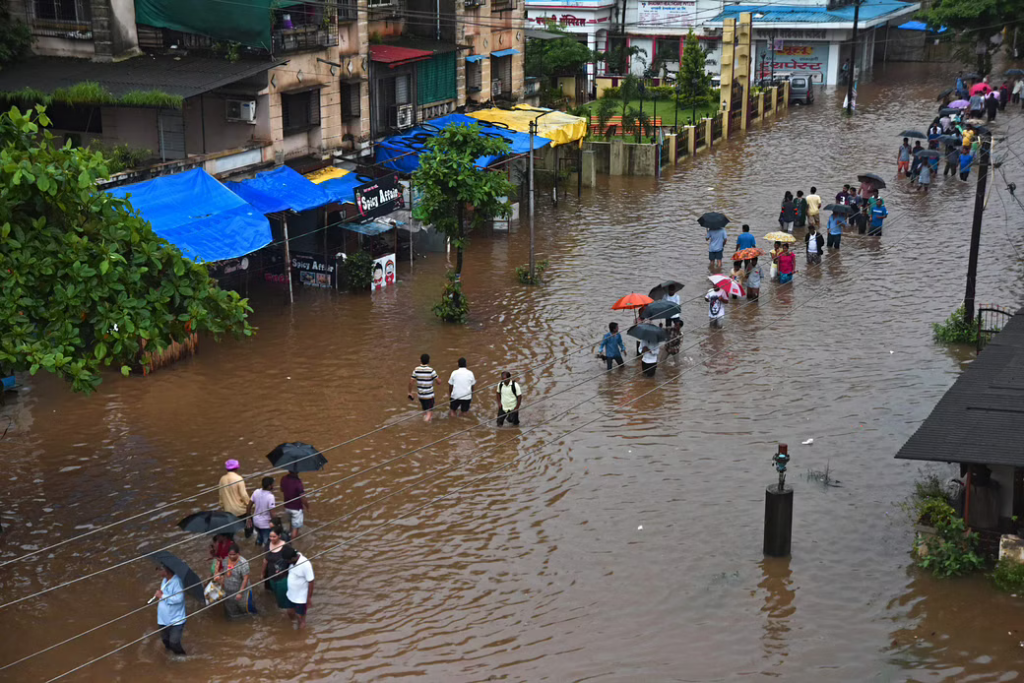
Problem Statement: Such scenarios are too common for urban households in India. While industries and upper high-class households extract umpteen groundwater as per their requirements, the potential rainwater runs off the ground into the drains causing blockage and subsequent floods. Normal urban households tend to either extract groundwater or buy it from the Municipality pipelines. Rainwater harvesting is never on the agenda because, on average, it costs 7500 DKK to install the systems for it without any financial returns in the future. Taking the example of Mumbai city, only 8% of the rainwater is harvested while it receives 2422 mm of average annual rainfall. The groundwater level is declining at the rate of more than 50%, the rainwater slips down the drain.
Our Solution: To solve this issue, we at Sparniir (Spar in Danish means to save and niir in Hindi means Water) have developed a cheap, reliable, and modular inverted umbrella prototype that collects rainwater minimally filters it, and fills the tank set up on the rooftop of the urban households. The product has a high surface area which collects 450L water per day if the area receives 50 mm of rain per day during the rainy season as compared to the 500L daily water consumption of an average urban household. The umbrella is fitted to the tank with covers compatible with any usual water tank and is supported with the help of carabiners. It is extremely easy to fit the product into existing tanks which helps the household save approximately 130 DKK per rainy season. The product costs 590 DKK as compared to the 7500 DKK for usual harvesting systems while giving a payback period of 4 years.
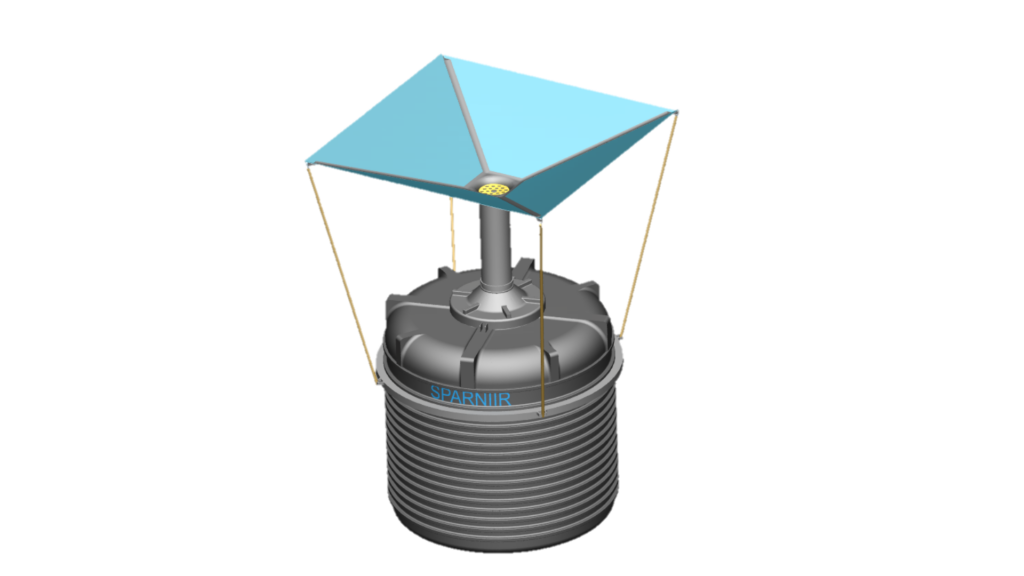
We not only harvest the rainwater, but we are also monitoring the water level and quality in the tank. This helps in two ways: the data collected helps the government with detailed rainwater data in the city while the households get regular data about the available water and ideal use cases for the same. Getting detailed rainfall data for the city is exceedingly difficult given the costly equipment which needs to be set up at multiple locations, our product helps do this easily and innovatively. Not only this, with the regular water data in the tank, the households can make judicious usage of water preventing the water to run out due to unnecessary usage.
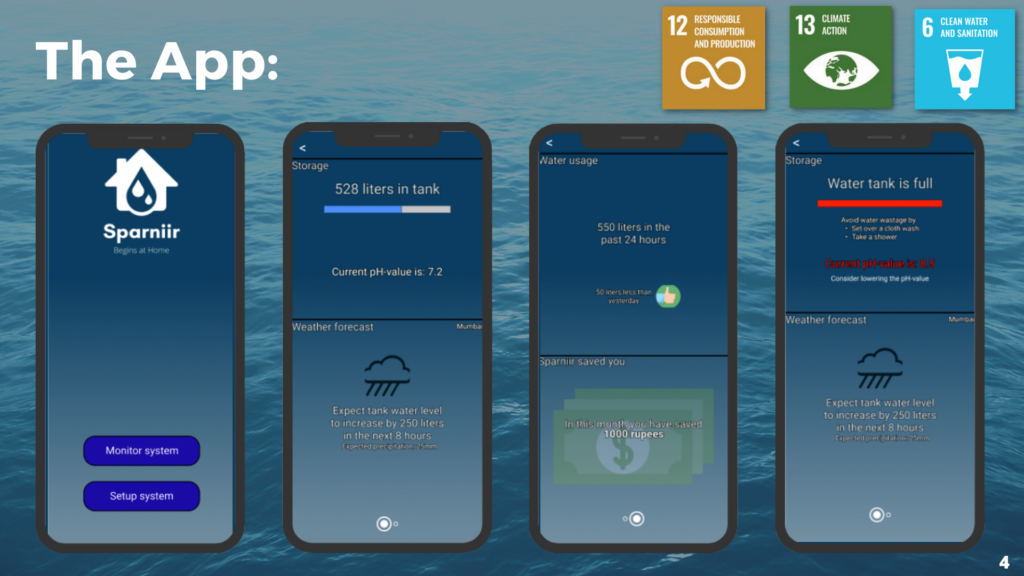
The Business Model: Sparniir generates revenue by selling the product to urban households for a marginal profit of 20%. Raw materials are ordered, and our warehouse builds the product based on our agreed design which is transported to the urban households for sale. While the production costs 350 DKK, we incur a marketing cost of 60 DKK and a small amount in labor/other costs. From the customers’ point of view, they gain around 130 DKK per rainy season because rainwater covers around 40% of their water consumption which they used to buy from the Municipality. This amounts to a payback period of 4 years and considering the product’s life to be 30 years long, they gain a minimum of 3500 DKK with this product. Not just this, looking at the non-monetary side, the customers get the satisfaction of conserving water and contributing to nature. It helps increase nature awareness in India.
Market Size: One important aspect of this product is that it has a huge market of urban households in India to cater to. If we start from a pilot project in Mumbai and scale it gradually to other parts of India, we can achieve a huge available market. Talking in terms of numbers, our product stands the potential to be used in 12 million households in Mumbai alone and we can scale it to more than 80 million urban households in India which receive a good amount of rainfall as well amounting to more than 44 billion DKK as revenue. This number will increase exponentially with time as urban households are increasing with the country developing and the public interest in nature conservation growing. Additionally, given that the product fits any type of tank (like the Sintex tanks usually found in Indian households), it can be scaled globally as well.
Competition: There are many competitors in the rainwater harvesting domain in India, this competition is diverse in terms of the target market, products, and services offered. For example, ThinkPhi can be said to be a close competitor because it makes inverted umbrellas to make public places aesthetic and sustainable. Other competitors make products that save rainwater in different capacities, provide consultancy services to set up rainwater harvesting systems at home, and technical solutions to save water for the average person. The main factor we differentiate with them is the cheap costs we offer. Setting up a rainwater harvesting system in a typical urban household will cost them around 7500 DKK which is difficult for them to afford. Our solution provides this to them at 590 DKK only and with an additional benefit of a 4-year payback period. We also differentiate on other factors like reliability, product design, target audience, etc.
Implementation: Coming to some practical aspects, implementing this project on the ground is important. We plan to start with a pilot in Mumbai, scale it to reach out to the large audience in Mumbai, and then gradually scale it to other urban households in India. As explained earlier, we have a good profit margin and a good market to tap into. Hence, investments attract enormous amounts of profits for the company if the marketing and penetration work well with time. Looking at the first three years, we plan to invest 30k, 2.5M, and 42M DKK respectively to get the expected profits of -5k, +50k, and +18M DKK in the respective years, hence proving the success of the company investment.
Traction: This project took suitable time to develop with a team of 6 at Denmark Technical University. Shaping the product needed us to survey more than 50 urban households. It helped us get the data about daily consumption, tank size, and water costs. It was motivating that 74% of the households agreed to install such a system while the rest were unsure about the deal.
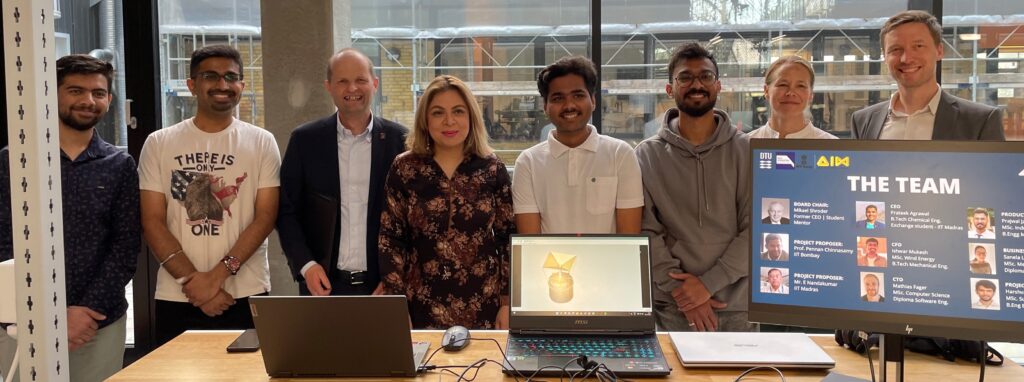
The Team: The most important part is our diverse team dedicated to working on the project. The Board Chair of Sparniir, Mikael Shroder is a former CEO and a student mentor. The project proposers, Prof. Pennan Chinnasamy, and Mr. E Nandakumar are from the prestigious institutes IIT Bombay and IIT Madras respectively India. Prateek Agrawal as the CEO of the company, Ishwar Mukesh as the CFO, Mathias Fager as the CTO, Prajwal Jadhav as the product developer, Sanela Muric as the business analyst and Harshvardhan Gupta as the project manager.
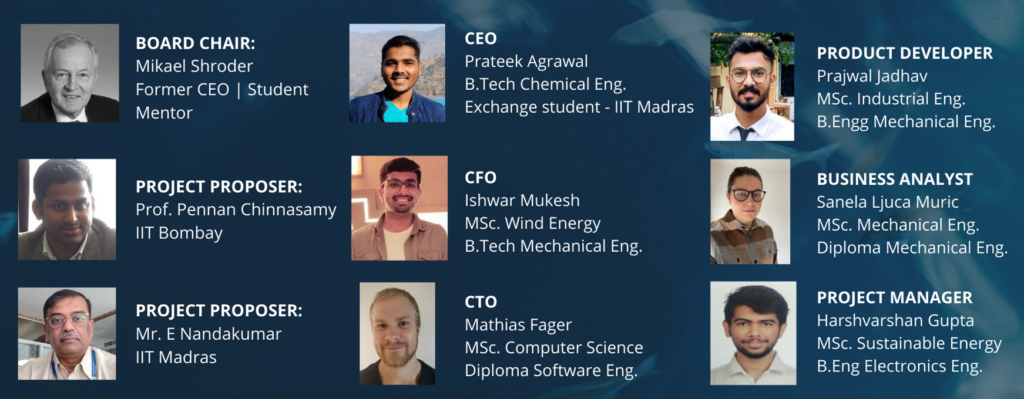
This project is being supported by Indian government organizations like the Atal Innovation Mission (AIM) and the National Institution for Transforming India (NITI) Aayog. Next Generation Water Action (NGWA) provided us with a great platform to get good mentorship and support for our project idea. Working as a part of the X-Tech Entrepreneurship course at DTU Skylab, we gained traction from Indian Ambassadors to Denmark regarding the project. Sparniir with its generous supporting pillars is set to build a stable foundation for the success of our company.





